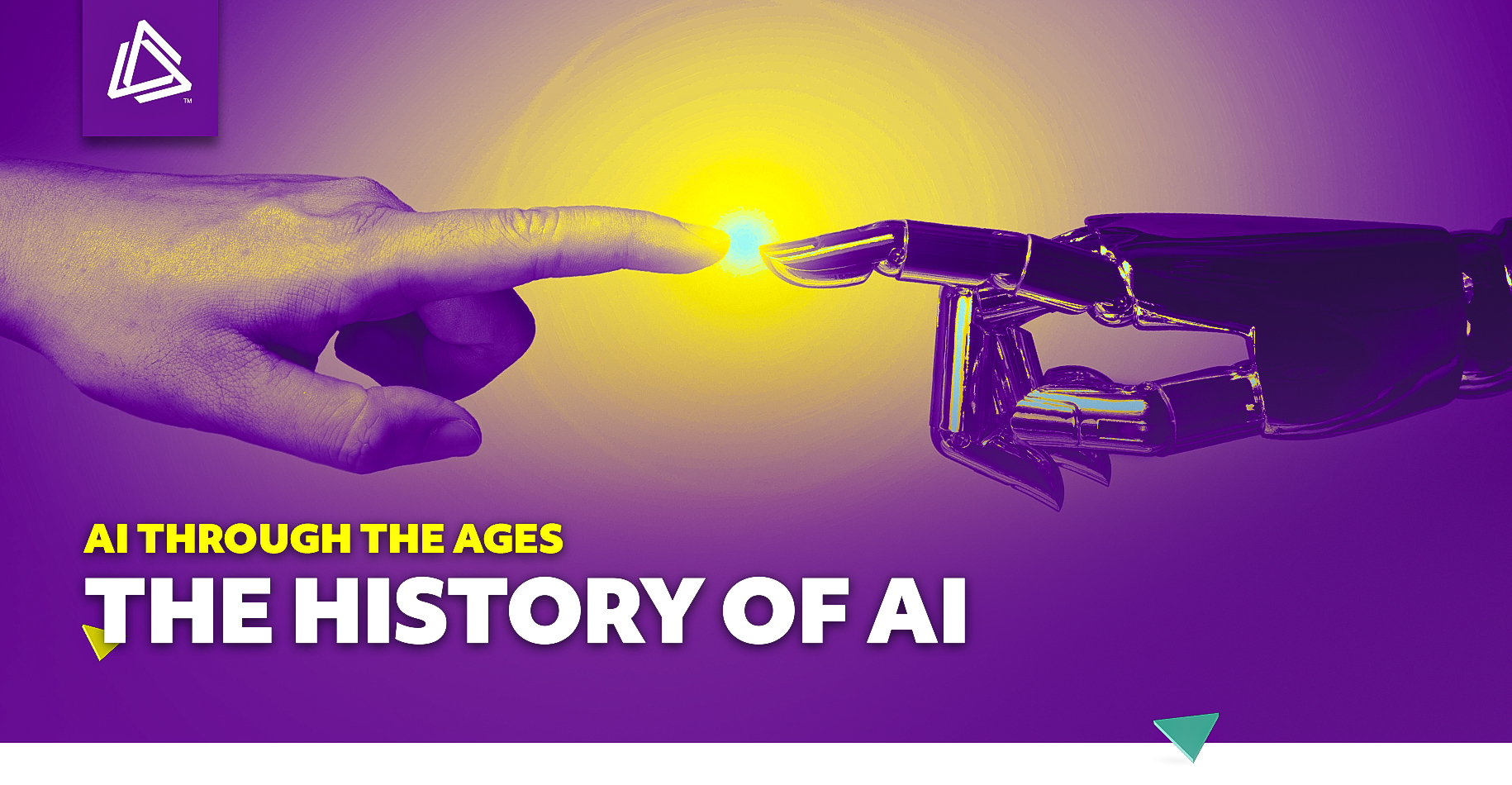When people tuned into The Jetsons in 1962, the futuristic technologies seamlessly integrated into the characters’ daily lives seemed like a far-off dream. But today, quite a few of those once-visionary ideas have become a reality; we now have flat-screen televisions, smart watches, video calls, drones, and even robot vacuums!
At the heart of this technological revolution? The remarkable journey of Artificial Intelligence. AI often evokes thoughts of the recent advancements of the past few years, but its origins can be traced back much further – to before even the invention of computers. Come along with us as we embark on a journey into the fascinating evolution of AI, starting from its origins in the 19th century to today’s cutting-edge technologies.
The Origins of AI
The story of AI can be traced all the way back to the 1840s. This is when Ada Lovelace, one of the world’s first computer programmers, wrote the first algorithm and computer program meant to be processed by a machine. Lovelace believed that AI couldn’t function without human input, which is still true today; while AI may seem like it has a mind of its own, it cannot operate without a human telling it what to do. Although the invention Lovelace was working on – Charles Babbage’s Analytical Engine – was never completed, her work laid the foundation for the technology we have today, including machine learning and AI.
The Birth of AI
Fast forward about a century later to the 1940s and 1950s, when renowned mathematician and computer scientist Alan Turing started delving into the potential of AI. He began to theorize that machines could replicate human problem-solving skills. However, like Lovelace, his theories were never tested due to the lack of advanced technology and the prohibitively high costs of computing at the time.
In 1956, John McCarthy, often called the “Father of AI,” coined the term “Artificial Intelligence.” The first AI conference convened later that year, marking an essential step in the formalizing AI as a field of study.
The Emergence of Robotics
As more scientists and mathematicians joined the quest for AI, significant progress was made. In 1969, researchers at Stanford University, led by John McCarthy and Donald Michie, constructed Shakey the Robot. Shakey was the world’s first purpose-driven robot and signified a departure from simple instruction-following machines. This marked a pivotal moment as AI systems began to show the potential for decision-making capabilities.
A Triumph in Chess
Artificial intelligence captured the world’s attention in 1997 when IBM’s Deep Blue computer defeated reigning world chess champion Garry Kasparov. Deep Blue was a highly sophisticated chess player designed to evaluate millions of possible moves in seconds. This momentous event marked a major milestone in the field of AI as it demonstrated that AI systems could outperform human experts in complex, strategy-based games and showcased the potential of AI to solve complex problems that involve extensive calculations and strategic thinking.
The Godfather of AI & Beyond
Geoffrey Hinton, often hailed as the “Godfather of AI,” is a prominent figure in the history of artificial intelligence. His work in the 1980s and 1990s focused on developing artificial neural networks, particularly the concept of deep neural networks. These networks are inspired by the structure of the brain and are designed to comprehend intricate patterns and data.
While Hinton’s direct involvement has lessened, many professionals and researchers continue to push the boundaries of AI and expand its capabilities and applications, largely thanks to his work. Deep learning has become a cornerstone of modern AI applications in many fields, such as the healthcare and automotive industries. Medical imaging, for example, has seen tremendous advancements with AI-powered diagnostic tools to aid in the early detection of cancer and other diseases, while companies like Tesla have been developing self-driving cars that use AI to perceive their surroundings and make real-time decisions. Deep learning has also powered advancements in natural language processing with the development of language model-based chatbots like OpenAI’s ChatGPT.
Today’s AI
AI has made tremendous strides in the 21st century. From helping us with content creation and website development to navigating our roadways with self-driving cars and cleaning our homes with robot vacuums, AI continues to evolve with platforms that can assist us in various aspects of our lives. Time will tell, but perhaps in the future, we will all have AI assistants – just like in The Jetsons!
Interested to learn more about AI and it’s resourcefulness? Check out a few of our previous blogs, or contact Vive Marketing today!


